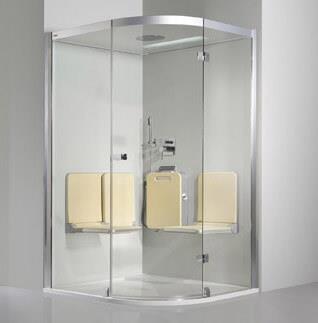So many people have now realized the benefits of owning a steam shower in the home and have bought and installed them. But buying a brand-new steam shower and installing it in your home can really leave a massive dent on one’s wallet.
As with many other DIY projects, designing and installing your own steam shower would cost much less than paying someone else to do it for you. But how do you go about the process in case you cannot afford a new steam shower?
Fret now, we?ve got your back! Follow our guide and save a large sum of money that you could invest elsewhere.
Things to Consider Before Building Your Own Steam Shower
? Size of the Shower and Seats
First, make sure that you have enough space inside your bathroom to place the shower. Then consider the inner parts of the steam shower that could be placed comfortably inside the space.

Do remember to keep the shower?s capacity within the limit or it will consume more power than what your expectation. You better prefer slightly sloped and comfortable seats. If there is not much space, get a folded seat and when you have no space issues, use the wooden or tiled bench.
? Shower Location
When it?s about placing a steam shower, most homeowners choose any corner inside/beside the bathroom based on the shape. Don?t forget the size and height of the shower. For better outputs, place the steam away from your outside walls, especially in the winter.
? Shower Door
The door may block off the steam shower?s space from the remaining part of the bathroom since that?s an unheated area. The door should be watertight rather than being air-tight because you need to lock the vapor inside the shower.
Also, the outside wall of the steam shower could remain cold during the winter if you keep the door closed. So, plan to keep that door open then, or consider installing some radiant heat to keep your shower dry.
? Windows
Ensure your window is sealed in that specific area in which you require fixing it. Again, skylight need not enter that place where you place the shower.
? Ceiling Height or Slope
If you consider the power usage and space fact, a low ceiling is good for your shower. It can be about 8 feet or less than that. Some people often consider a sloped ceiling to prevent the dripping down issue.
For your home, slope the ceiling a half-inch each foot away from you. Commercial users slope the ceiling a two-inch each foot from the user.
? Steam Generator Location and Utilities
Before placing the steam generator, ensure plumbing access, electricity where the line of plumbing has a connection of water to your generator and a line of steam from your generator to your steam room and the line of the drain. Use 240 volts and an added circuit breaker for electric supply. Place your steam generator within 60 feet of the steam room.
Some experts consider the distance of 25 feet from your shower as the ideal. You have the option to have an adjacent closet, heated attic, and vanity to have service access. Don?t install anywhere that is actually a steam room or where water can freeze. Locate the steam head six-twelve inches higher on your floor.
? Materials
Use non-absorptive materials in walls and ceiling such as porcelain, ceramic tile. Don?t use materials such as concrete, granite, and marble. Higher porous materials will use up the heat, and you will need a powerful and larger steam generator. Add a strip that is anti-drift on your floor so that you don?t slip.
? Luxury Stuff
Nowadays steam showers come with certain luxury features like FM radio, lighting, television, radio, shower speaker, aromatherapy, foot massagers, and telephone. Use vapor minimizing fixture protected by GFCI (ground fault circuit interrupter) that will turn off the power when vapor is detected in your appliance.

How to Build Your Own Steam Shower-Basic Steps
Step 1: Choosing and Preparation of the Wall
Wall material affects the nature of the steam and the power amount required for your steam room. Heavy non-porous materials will need more heat. Choose materials that use up less power and reflect the heat. Seal your wall for moisture prevention.
Burnish several layers in your wall in which the first one barriers vapor, and now cover it with a water-resistant durock wallboard layer. Then put non-porous tiles over that.
Step 2: Shower Enclosure Installation
Make the base in such a manner that it totally drains the water away before you install your shower enclosure. Use a spirit level to ensure the base placement. Then place and attach the wall with self-tapping screws with your base.
Step 3: Placement of the Right Circuit
Ensure installing a base electrical circuit that is separate from your home?s main circuit. You need an isolated circuit to be protected from any electrical shock during use. So, assign this installation task to any professional electrician.
Step 4: Exhaust Fan Installation for Ventilation
Install an exhaust fan and ventilation duct to avoid excess moisture and prevent mildew and mold. Place the exhaust fan outside your steam room. Also, consider using a good bathroom dehumidifier.
Step 5: Door Installation
Now take the door?s exact measurement and ensure placing a door that is water-tight. Keep your door open to always keep the inside walls dry.
Step 6: Accessories? Placement
In case you are a music lover and want to have an audio system, don?t place that on your shower wall. Because there is a possibility of an echo inside. Instead, place it on the ceiling so that the sound will not reach other rooms. Consider this same thing to place other accessories such as telephone, FM radio, and the like.

As the editor of the blog, She curate insightful content that sparks curiosity and fosters learning. With a passion for storytelling and a keen eye for detail, she strive to bring diverse perspectives and engaging narratives to readers, ensuring every piece informs, inspires, and enriches.









